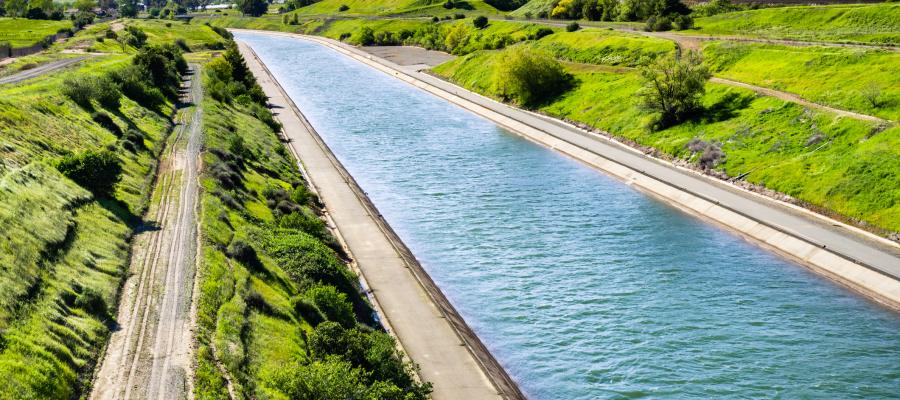
Water is related to everything -- energy, health, environmental justice, agriculture, recreation, and so much more.
Water is California. From the Pacific coast to the Sierra snowpack and all the valleys, deserts and estuaries in between, water (or the lack of it) defines the California landscape. Furthermore, who has it – and who doesn’t – defines our opportunities. Everything in the California mythos is related to water.
The tectonic forces that cause our earthquakes also create the mountain ranges that squeeze water out of the sky. Offshore air masses over the Pacific Ocean create mountains in the sky (Pacific High) that modulate our normal annual spring flood and summer drought cycle. Complicating things, although multi-year droughts have always beset California, they are increasingly more common and severe due to climate change.
Agriculture has thrived because our predictable annual summer drought allowed farmers to engineer exactly when and how much water to apply to their fields.
The movie and aerospace industries located here for reliably dry weather. Semiconductor factories replaced fruit orchards in Silicon Valley due to the prodigious amounts of water required to produce both crops and semiconductors. For example, it takes 12 liters of water to produce a single California almond. It takes over 2,000 gallons of water to fabricate one 30 cm wafer used in making integrated circuits.
Even our famous traffic is made up of the embedded water fueling our cars, both gas and electric. While cars produce the lion’s share of our smog, water diversion from some areas, such as the Owens Valley, creates dust that travels long distances and contributes significantly to air pollution.
The California population and economy would not be so large if we had not engineered "artificial watersheds" that move water from hundreds – sometimes thousands of miles away. Every spring, we move water from the wetter northern part of the state to the drier south. This has upset the delicate ecological balance from the mountains to the sea.
Enlarging our watershed is an insurance program against local drought, but also pits us against a larger group of water users. For instance, Denver and Southern California are both outside of the Colorado River Basin, but rely on inter-basin water transfers from the same headwaters.
These water projects have allowed us to build an agricultural juggernaut that must be watered, even when the rivers and aqueducts run dry. When surface water is not available, we turn to time travel in the form of groundwater.
At first, it was just a short jaunt of a few months between the spring snowmelt and flood waters that soaked into the ground. As farm acreage grew, farmers (who can afford it) followed the water table every lower by drilling deeper wells until they were pumping up an unsustainable amount of fossilized groundwater, deposited thousands or even hundreds of thousands of years ago.
Wash your hands frequently, for at least 20 seconds, we are admonished. Those are hollow words to the ~1% of Californians whose wells have run dry or to the 2% that don’t have access to clean water or the many more who cannot afford to pay their water bills.
Dr. Grace Peng, Chair LWVC Energy Team
Coming up next :
California Plumbing – Water projects, surface water, local sources and groundwater, as well as the misalignment of promised water vs. available water.
